Join our Adventure: Get all my insider tips for motorhoming & road trips
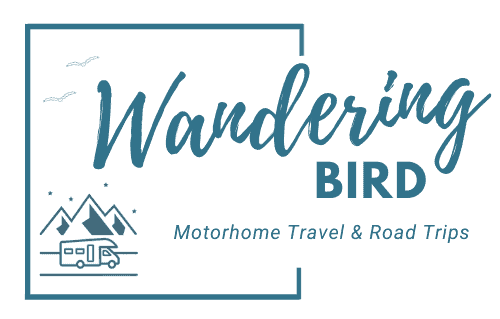

The Ultimate Motorhome & campervan packing guide (with list)
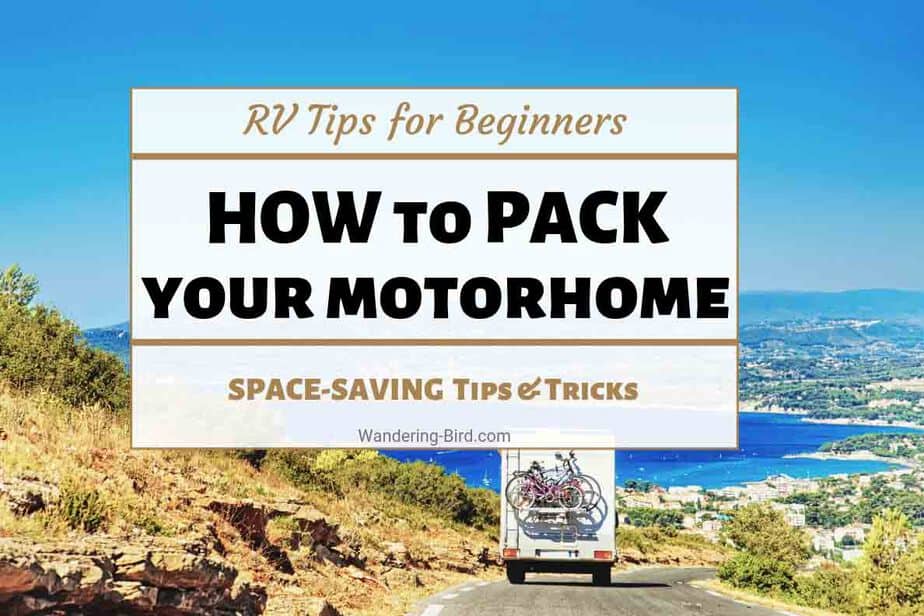
Packing up a motorhome or campervan? Not sure what you need or where to put it all so things are safe? Don’t worry, we’re got you covered- here’s everything you need to know, as well as a FREE motorhome packing list for you to use.
*We work hard to make this the best motorhome travel blog and road trip website possible, full of helpful content for you. The website is supported by our readers, so if you buy through links on this site we may earn a commission- at no extra cost to you. All opinions remain our own .
If you find this post useful, you can also treat us to a coffee – we promise to enjoy it while creating more useful content like this- we might even indulge in a biscuit (or two!)
JUMP AHEAD TO...
Packing a motorhome- the problem
One of the most common questions I get asked (apart from ‘what does motorhome payload mean and how do I check ?) , is about packing a motorhome, campervan, or RV. As I’m sure you’ve realised, trying to put ALL THE THINGS into a small space is not always easy! Not only do you have to figure out what to pack in your camper, but you also need to learn HOW to pack it.
It doesn’t matter whether you’re going touring around Europe for 6 weeks, or heading to the local campsite for a weekend, a poorly packed motorhome is at best noisy/ annoying and at worse dangerous to drive.
(If you’re still stuck on the WHAT you need, here’s a list of essential motorhome accessories we highly recommend you carry)
Still, once you have everything you think you might need/ want piled in your spare bedroom or garage, it’s time to start putting it all away.
The problem with not doing this properly is how many things there are which can rattle and shake around if not stored correctly. Not only is it annoying and distracting to listen to that noise whilst driving, but things could break, shake loose or even cause imbalances to the vehicle. Therefore, it’s really important to pack your motorhome properly.
Motorhome packing mistakes
After living and touring in our motorhome for several years, we’ve learnt some great tips and tricks to pack a motorhome, and we’re sharing them all below. When we bought our first camper, we knew nothing. Absolutely nothing. We packed our first van completely wrong! Boy did we know it when we set off on our first trip- there were creaks, bangs and noises EVERYWHERE!
We had to learn how to stop rattles in the motorhome , how to pack heavy things low and how to arrange lockers so we didn’t have to empty them just to get something in the back!
How do you load a motorhome? Assess your storage
You will find that you have ‘good lockers’ and ‘bad lockers’ inside your camper. Good lockers are easy to access, easy to see inside and easy to keep organised. Bad lockers are hard to access/ hard to see inside and large enough for things to get thrown in without any thought whatsoever, which makes them impossible to keep tidy!
Bad lockers can also have heating duct pipes/ wires/ switches etc inside them, which means you need to think about the types of objects you put into them.
Start by identifying your good/ bad lockers, then collect your gear and RV kit together.
Think about when you might need the ‘stuff’ you’re putting away. For example, you’re unlikely to need a whisk or games in an emergency, but you might need some tools, so keep those in a more accessible locker.
What will you need when? If the kids are asleep, is there anything under their bunks which you might need in the evening/ morning? What if one of you gets up early (me!) and the other likes a lie-in (while waiting for his bacon butty…!)
How to pack a motorhome or campervan – where to start
One of the hardest things is knowing where to start.
TOP TIP: Do NOT start with your pretty throw cushions or blankets or bedding… you’ll be moving them out of the way constantly whilst you do everything else.
I recommend you start at the bottom and work your way up. By that I mean start with under-seat lockers and start with the largest items, which can’t be put anywhere else, like a motorhome generator if you have one or tools/ spares.
- Start with your heavy/ awkward kit (Generators, outdoor furniture, tables, snow chains etc) If you have a garage or outdoor storage box , this might be fairly easy, but for many motorhomes, it requires thinking about your lockers carefully
- Try to keep similar items in the same place, so you can find things easily.
- Next, gather all your kitchenware/ crockery/ utensils/ plates etc together. Try to put them in places which make sense, but keeps things secure.
- Protect your heating ducts. You don’t want to store any hot/ perishable food next to these pipes, as they will get very hot. You also don’t want heavy items to fall inside a cupboard or locker and squish the duct- that can be an expensive repair.
Watch us packing a motorhome…
A while ago I filmed me packing our motorhome completely from scratch. (If you’ve got/ are getting a new van, or fancy some spring cleaning, you might find it useful to watch.)
In the video, you’ll see me starting with the things I’ll need most frequently and putting them somewhere easy to get to.
We hope you found the video useful. If you did, we’d love it if you followed us on Youtube . New videos with tips for motorhoming and campervanning in the UK and Europe are released weekly.
Packing Motorhome Tips- don’t panic!
Ok, when you begin putting things away, there’s a high chance your camper will be utter chaos. Don’t panic- we will get through this in the next hour or two and it will start to feel a lot more under control.
This is NOT the time to start shoving stuff into lockers and hiding it all away- that will only cause confusion and frustration later on and you’ll find vanlife so much more difficult. This is when you send the kids, dogs (and possibly husband!) out for ice cream or a looooooooooooong walk.
Then put some music or a podcast on, take your time and imagine living in the campervan for a week/ month/ full time. (These are our favourite road trip songs to sing along to !)
Think about weight distribution
Different to payload, it’s important to consider balance whilst packing.
If you have a generator or something really heavy, don’t store it in the same locker or even on the same side as all your tins.
Talking of tins, don’t store lots of loose things like that in a locker with something you need to take out frequently, like outdoor chairs or a BBQ. You’ll find having to remove 50 tins to get things out a pain in the backside !
What should you pack in a motorhome kitchen?
Thankfully, most of the things we use in the kitchen in the motorhome are exactly the same things you’d use at home. As a very brief guide, you need:
Plates, bowls, mugs, glasses, cutlery, condiments, utensils, TIN OPENER, BOTTLE OPENER, tea towels, washing up stuff, bin bags (doesn’t have to be the big black ones- we find the smaller pedal bin size are often better), kitchen roll, frying pan, saucepan, kettle, teaspoons. Other Road trip essentials
Those are what I would consider basics (though obviously, your list may well differ.) We also find the following useful onboard:
- Poachpods (have I mentioned I’m addicted to poached eggs? These things are a brilliant invention and I use them pretty much daily)
- Plastic boxes in the fridge to hold things in place
- Bottle bag (one of the wine carrying ones from a supermarket- these hold bottles and stop them clinking)
- Dishdrying matt (we don’t use a rack- takes up too much space)
- Tea, coffee, sugar, hot chocolate etc
- Vitamins or any tablets you require
- Spray oil for frying- personal preference but it’s easier to dispose of a little excess oil than a whole lot!
- Chopping boards
- Sharp knives, including steak knives if you’re partial to red meat
- Soup spoons (if you eat (drink?) soup!)
New to motorhoming?
Feeling a bit overwhelmed.
It can be hard to start a new hobby. Let us show you how it all works so you can travel with confidence
This form subscribes you to our mailing list. Join over 15,000 others in our tribe and get our best motorhoming tips and tricks in our weekly newsletter.
We hate spam and spammers are the worst.
You can unsubscribe at any time.
RV Packing Tips for beginners- the kitchen/ food
Once the annoying and heavy stuff is stowed away safely, and the kitchen pans and utensils have mostly got homes, I start looking at food. We don’t do a lot of detailed cooking in our motorhome, but we like to keep the basics like flour/ sugar etc in airtight sealed boxes like these. We find it makes them last longer and stops any little insects getting in.
Try and keep 1-2 rolls of paper towels easily accessible, but store the rest in lockers under the seats. You don’t want to take up all the good lockers with things like paper towels or toilet rolls, which you only need access to every few days.
Make sure sharp knives and other kitchen tools are safely stowed. We used to store ours in a drawer, wrapped in soft cloths so they can’t accidentally cut anyone, but now we have a magnetic strip on the wall which works MUCH better than I thought it would!
Not really food related (although it kind of is- sorry!), but don’t forget toilet chemicals. We use a product called Solbio organic toilet fluid , which is natural and doesn’t contain harmful chemicals. It’s also safe to be disposed of in septic tanks or fosse, meaning we have more options to dispose of our toilet responsibly.
Keep things safe while travelling
There are some things in a van which are designed to be rugged and sturdy.
And others which aren’t.
If you have a motorhome tv , they are designed to withstand more vibration than a ‘normal’ TV, but they are still susceptible to damage if banged and knocked around. Make sure that things which are ‘fragile’ are stored securely and can’t break whilst travelling. Either wrap them properly or pack them in between other things.
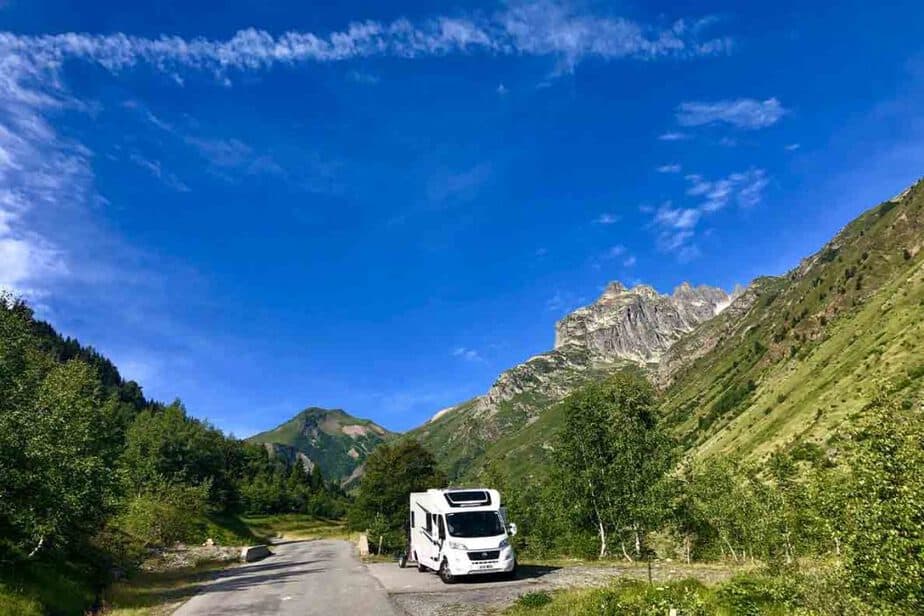
How to pack a motorhome- clothes
By now, most of the lockers will be filling up, especially the ones under the motorhome seats. It’s time to think about clothes. Try to split your clothes into things you’ll want daily (underwear, socks, t-shirts etc) and things you might not use every week (snow gear, hiking boots, bikini etc) Obviously, this will depend entirely on where you are road tripping and what you enjoy doing there!
We tend to store shoes and boots for outdoor and water activities in a separate locker or in the wardrobe, and clothes in the wardrobe and we have one small cupboard each.
It is REALLY easy to overpack your clothes, especially for girls, but this is one place where you need to be pretty ruthless. If you are only travelling in your camper for a week, then pack according to the weather (although ALWAYS bring a jacket/ warm jumper, even if the forecast is perfect. You’d be amazed how many times we’ve been caught out!
This basic list is going to vary wildly from person to person and also because of the area you are visiting. But to get you started, here is a checklist for clothes to carry in your camper.
Not sure what you need in your motorhome or RV?
Here are 7 essential ‘packing a camper’ checklists with everything you need to remember to pack, they’re free to download and print , what should you pack in a motorhome- the ‘bits’.
Once you’ve organised everything else, it’s time for the ‘bits’. We all have these- the things that go in that special drawer in your kitchen in a house. It’s rare you’ll be able to find a drawer for this purpose (lucky you if you do!) We have a ‘bits box’, which sits inside one of our cupboards and holds batteries, tape, string, cards, pens, notepad and a million more things.
Again, try and keep things you think you’ll need frequently easily accessible, and put other things towards the bottom/ back. Some ‘bits’ to remember are:
- Games/ cards or whatever you choose to do to relax
- Things to do for the kids on road trips (check out these road trip children’s games )
- Chargers for phones/ laptops/ ipads/ wifi/ bike headsets/ portable radios… you get the idea! We use a mixture of 12v chargers (for use while we’re driving) and other chargers which we use on an inverter if necessary, but we try to avoid this. Annoyingly, I’ve just upgraded to a Macbook Pro, which is amazing but my 12v charger for my old laptop doesn’t fit! I’ll have to wait for them to release one for mine.
- Placemats/ table cloth if you wish. We don’t use these indoors, but we do use a table cloth if we’re setting up a table outside.
- Motorhome Cleaning gear- we keep cloths, duster, wet wipes and vanish spray all easily accessible. We also carry an iron and an ironing board as Mr WB is terrified that he might be called into an urgent meeting and need to get on a plane straight away… it’s not happened yet but I just know if I take it off the van we’ll need it! So it’s staying (for now).
Whilst I think about it, don’t forget van bedding ! Pillows, duvet, bedsheets etc. We have proper bedsheets- we’re not a fan of sleeping bags. We are lucky enough to have a drop-down bed to store the bedding on, but you might need to sacrifice a locker to store yours in.
Other things we try not to forget when packing our camper:
- Big camera and lenses
- Mini tripod & microphone for vlogging ( watch our travel videos here)
- Laptop/ iPads/ phones
- Wifi dongle
- Medical box- basic necessities like plasters, nurofen, diarrhoea tablets, water purification tablets etc. (Don’t drink tap water in Europe- buy bottled.)
- Laundry stuff. If you wash your laundry while travelling , most laundrettes across Europe require you to provide your own detergent etc. We bring a small amount of ours so it’s ready if we need it.
- COINS in the local currency. For parking, tips, tolls- you’ll always need them!
- Gas bottles- we carry two 6kg ones. Beware the issues with getting gas in Europe .
- Hose pipe for filling fresh water.
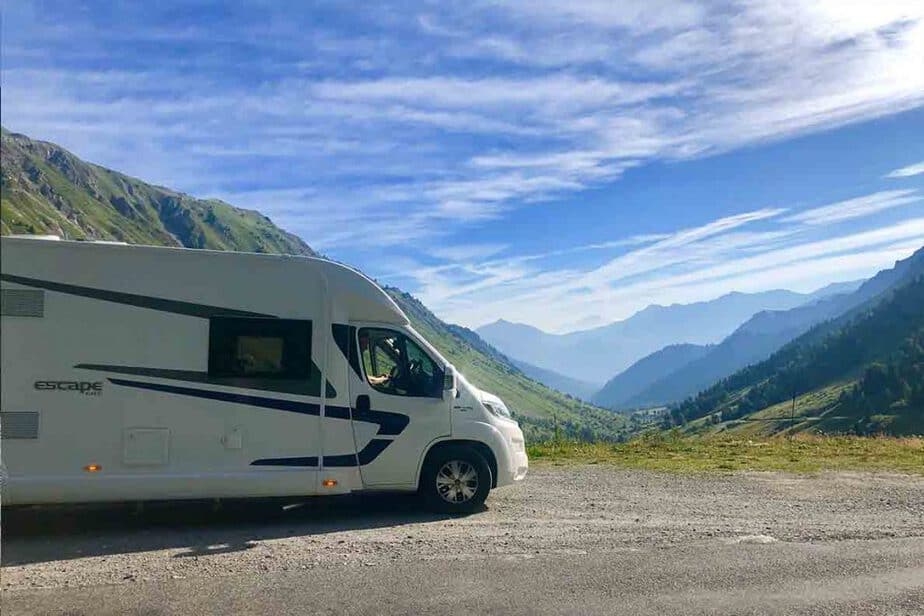
Motorhome packing- more tips and tricks
Here are some more of our best tips and tricks to help you pack your RV or motorhome.
- Put heavy items as low as possible
- Try to place things you don’t use very regularly (like snowchains) in the places which are annoying to get to (in the back of lockers, under bed, in middle of garage etc.
- Try and put heavy items over the axles as much as possible, and try not to put ALL the heavy items towards the back/ front. You want the motorhome weight spread over each axle as evenly as possible
- Store tins/ heavy things which could roll as low as possible, and put them in bags or boxes to stop them rolling
- Try not to carry many extras for plates/ mugs/ glasses, and put the extras in secure boxes so they can’t rattle around.
- If you’re trying van life with kids , make sure they learn about packing securely so things don’t get broken in lockers.
Stop the noise! How to stop rattles in your motorhome
My husband HATES rattles, bangs and noise in the van. We have been known to stop 5 minutes into a journey and repack when we’ve got things wrong.
It’s so bad, I’ve written an entire post on HOW to stop rattles in your motorhome, campervan or RV , full of tips to help you have a more peaceful, calmer journey.
Don’t forget- rattles come last. There’s no point wasting a lot of time stopping rattles in your motorhome, when an hour later you decide to move everything around anyway!
So, those are our best tips and tricks for how to pack a motorhome. We hope you’ve found them useful. Most of all, don’t panic . As long as you have the right paperwork, your keys and a credit/ debit card, pretty much everything else can be bought en route if you need to.
Unless you’re going somewhere really off-grid. In which case, maybe panic – and please send me photos so I can enjoy your road trip adventures!!!
Other posts you might find useful:
- Your first motorhome trip: step-by-step guide
- How to plan EPIC motorhome trips
- The BEST motorhome sat-navs (and how to choose)
- Motorhome gadgets worth their space!
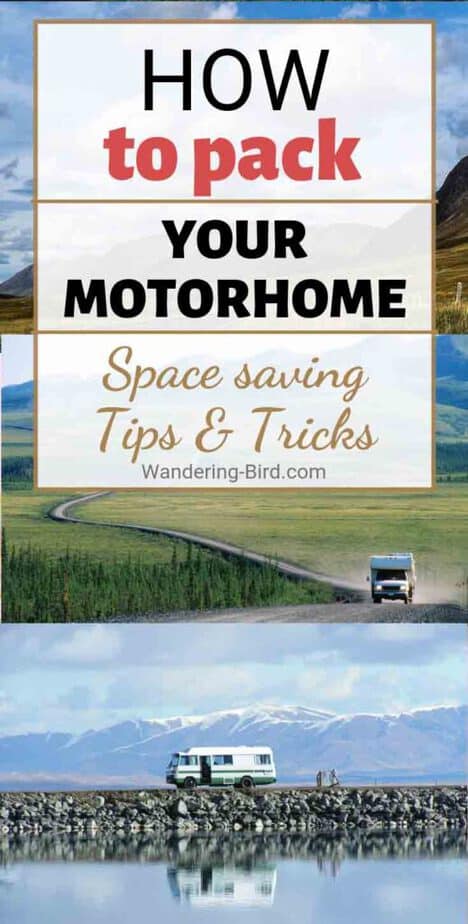
Kat never planned to buy a motorhome. She also never planned to quit her job as an air traffic controller, go touring around Europe in said motorhome, start one of the UK’s largest motorhome travel websites… or get a cocker spaniel.
Find out how she went from stuck in the rat race to being a digital nomad and inspiring thousands of people to have their own epic adventures here.
If you’d like to connect with Kat, send her an email or follow her adventures on social media.
Sharing is caring!
Similar Posts
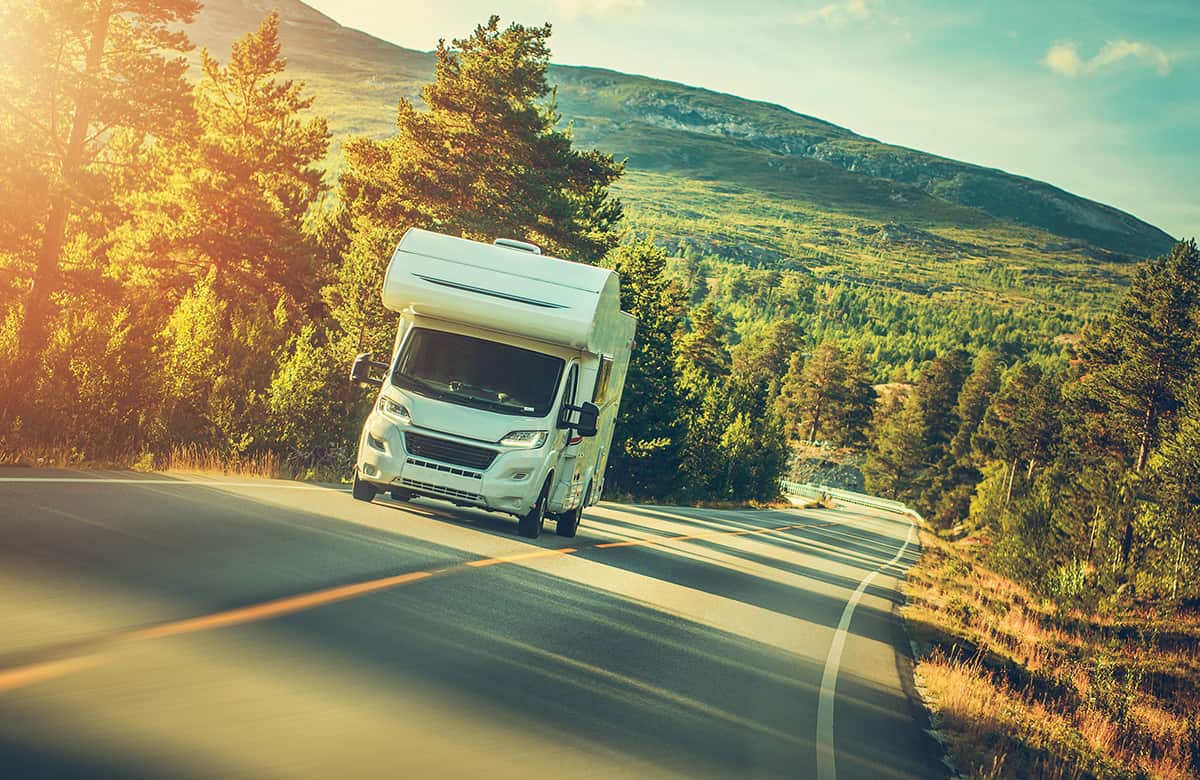
Motorhome Departure Checklist & Pre-Trip Tips

Don’t buy an Ecoflow power station for Vanlife until you READ THIS!
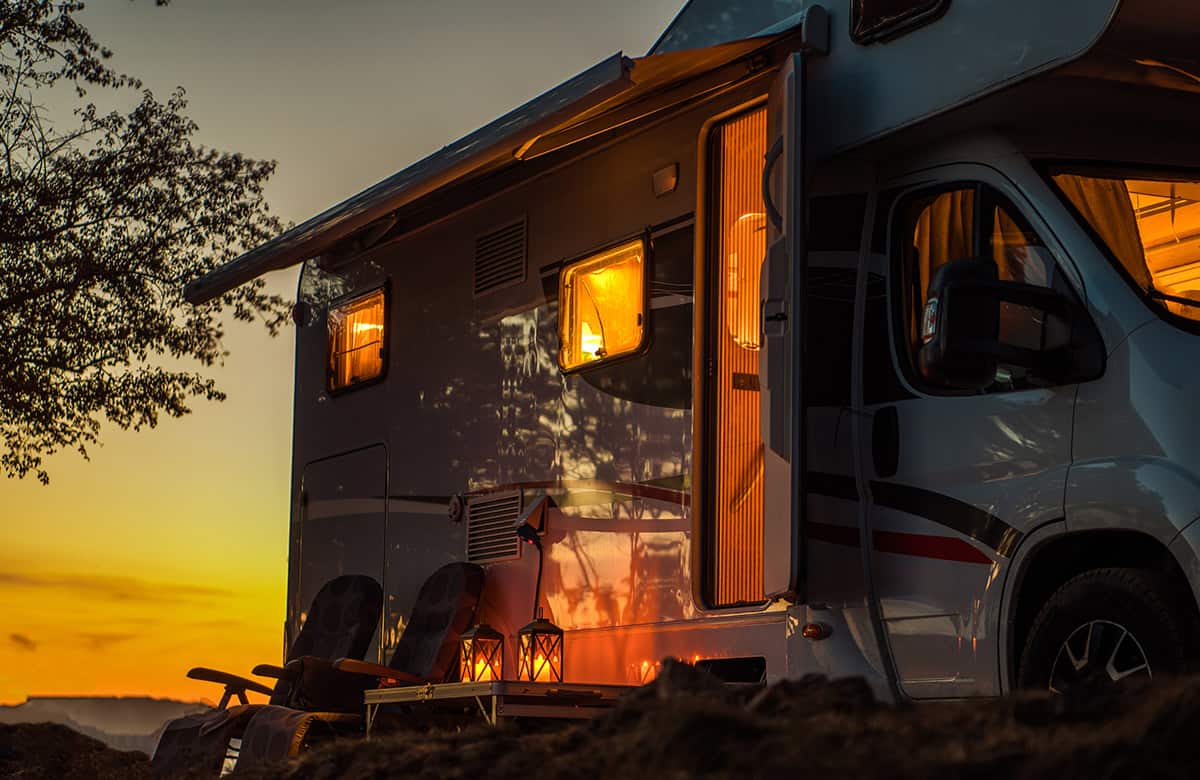
Motorhome Leisure Batteries- Complete charging & maintenance guide
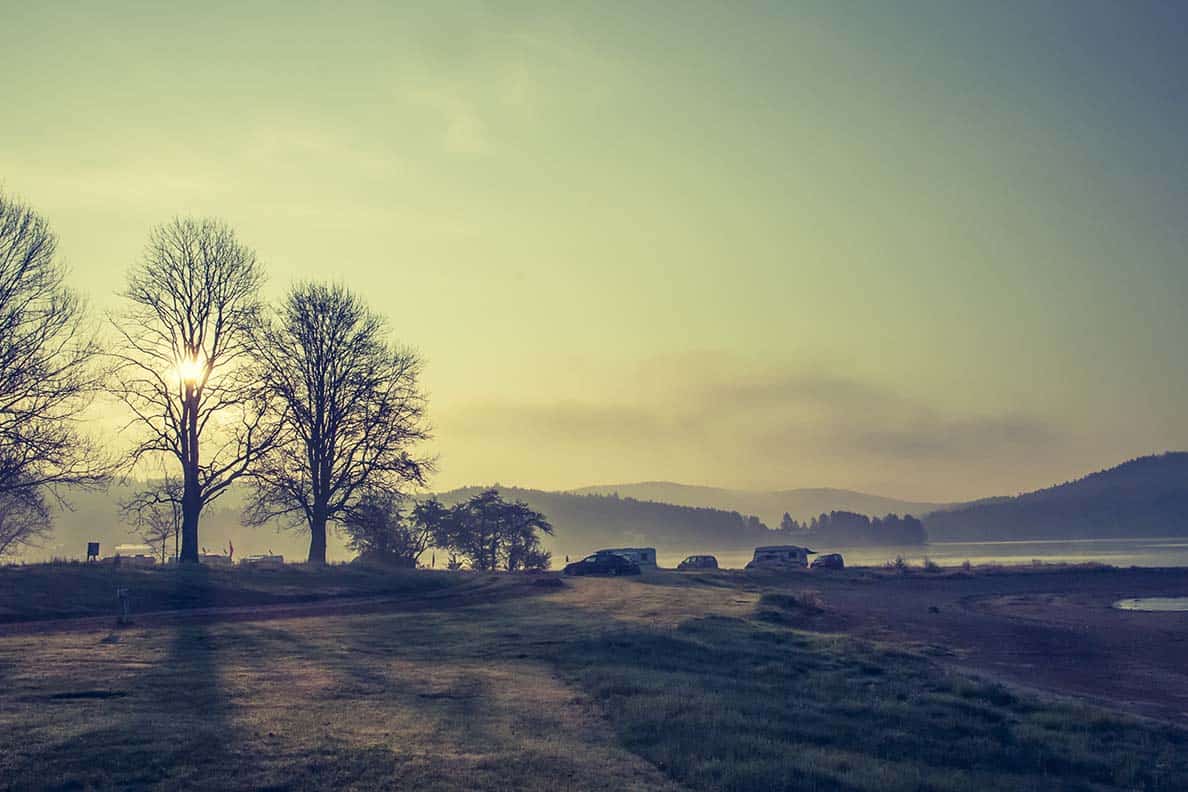
15 Easy tips to Stop Condensation in your Motorhome, Campervan or RV
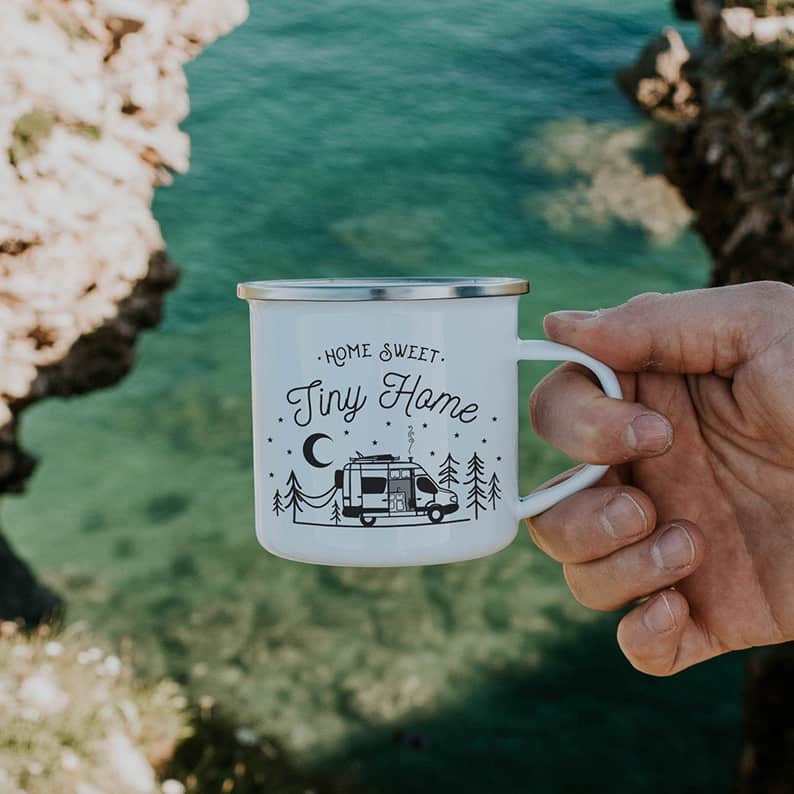
45 best Motorhome, Caravan & Vanlife mugs
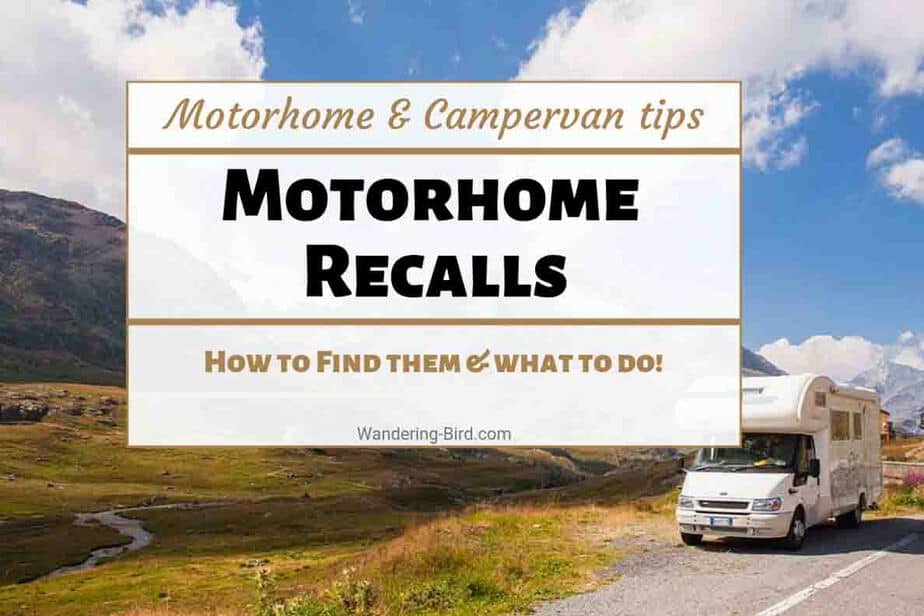
Motorhome & Campervan Recalls – everything you need to know
10 comments.
Great tips on what to pack for motorhome travels. I always pack my clothes and then take half of them back out before I set off… and then I still usually only end up using half the clothes I’ve taken! Our essentials also include a ukulele and a guitar, although other instruments are available! My top tip is always remember, there will be a laundrette and food shops somewhere. 🙂
Ha! I’m exactly the same. Take far too much and don’t use most of it. Love that you bring a ukulele and guitar. Mr WB plays guitar but we haven’t got one onboard- might be something to consider for the next trip! And great tips- totally agree. 🙂
Ukuleles are the ideal instrument to take away in your motorhome. You can always find a space for it 🙂
Would like tips how to get tv working in Motorhome please
Have you tried linen bath towels or the micro fibre towels? Said to be space saving and quick drying, I am thinking of trying out. Also I have my mobile number and email address on a dog tag on my key ring –
Thank you for sharing such helpful tips.Hope this might help campers and hikers. Great tips explained. Covered almost every little aspect. I really appreciate your article. Thanks!
You’re very welcome Bailey. So pleased it helped.
Watching your packing of the motorhome I have the following comment. You put the heavy generator at the far rear of the vehicle which goes against what you were advocating about putting heavy things in the middle. That also requires a supply of unleaded fuel which adds even more weight and takes up space. Rather than using a generator I would suggest a battery-battery charger and 1500W inverter. When requiring heavy load items (such as microwave) or when running low on leisure battery charge, running the main engine at idle uses very little fuel and is as quiet as a generator. There is also some free heat when conditions are cold. You will also achieve a significant weight saving (very important when touring).
You’re right in many regards Nigel. Where we store the generator is the only place suitable to store it, so that wasn’t much of a decision.
One thing you could try is putting shelves in the wardrobe we find putting boxes to keep clothes we have to take them out to find things. So it’s one shelf for me and two for the wife lol
Leave a Reply Cancel reply
Your email address will not be published. Required fields are marked *
Save my name, email, and website in this browser for the next time I comment.
What to Pack for a Campervan Trip: Complete Packing List
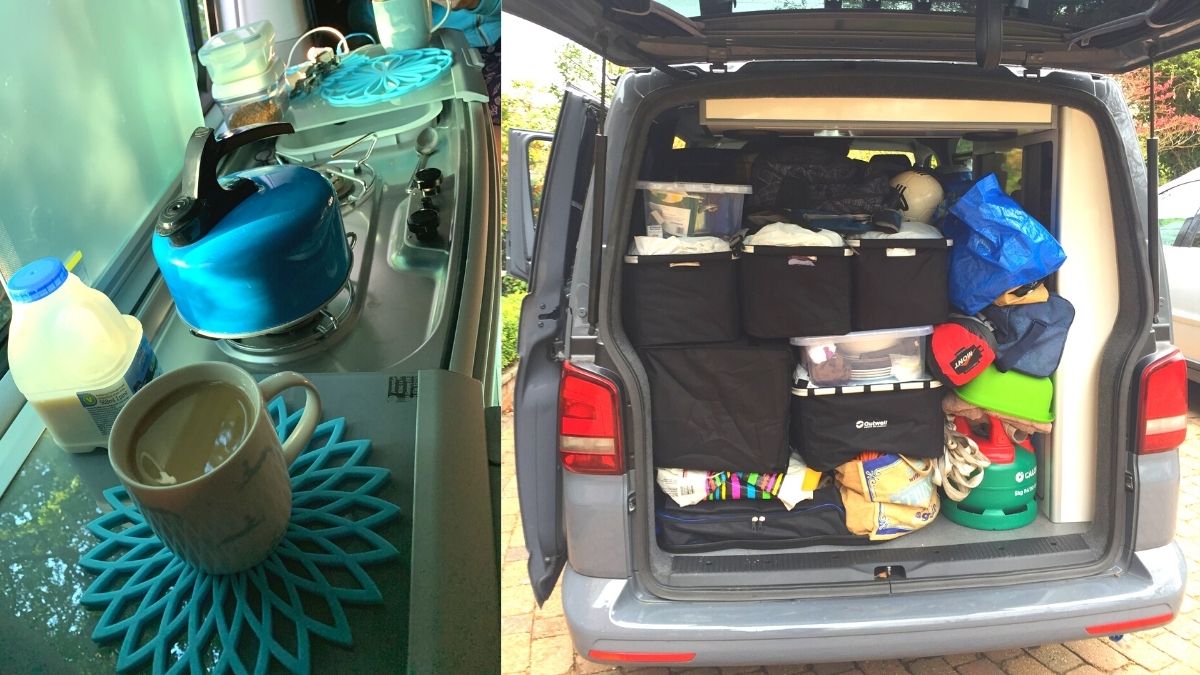
Are you about to embark on your first great adventure in your new campervan and wondering what you need to pack for your trip? Read on and see what we recommend in our campervan essentials packing list.
First up, we are a family of four, two adults and two kids, so our list is based on those needs. Even if your passenger numbers look different to ours, you might still find a couple of good tips on essentials to pack.
Our campervan is a VW California, so the space and facilities we have available in our vehicle may well differ from yours. Most of the gear is equally applicable to any campervan or motorhome.
These are the essential items we always include on our campervan trip packing list.
Mattress/topper
Campervan cooking utensils, campervan pots and pans, camping plates and bowls, portable stove and camping kitchen, extra table and chairs, clothes, shoes, and coats, towels and toiletries, clothes line for drying clothes, pop-top cover and windscreen cover, drive away awning or comfortz awning kit, campervan electric hook up kit, heating and lighting, ramps/chocks, games to play in the campervan, ball games and sports equipment, wetsuits, portable speaker, tablet/laptop, campervan first aid kit, campervan tools and extras kit, so that’s our campervan packing list.
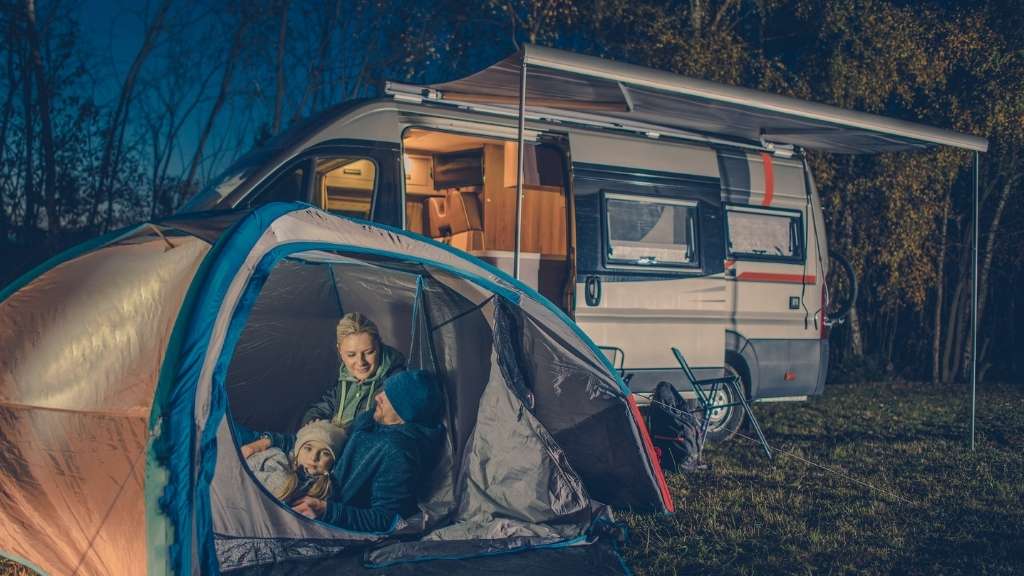
Let’s start with the basics. Nothing is more miserable than a bad night’s sleep. If we are going away, then we want to be sure we get a decent amount of rest.
Sleeping comfort is paramount to us.
After much research, we decided to purchase some Duvalay sleeping bags . We purchased four separate bags so we could have flexibility on who would sleep where.
In addition to this, we also bring a decent pillow each; full-sized comfy pillows from home.
The sleeping bags mean we do away with the need for any other bedding such as sheets or duvets.
Our VW California Ocean came with the comfort mattress installed which was excellent. Although for yours truly, it was still a bit hard.
Our Duvalay sleeping bags have a built-in mattress so give us the extra mattress comfort that we need.
If we used regular sleeping bags or sheets and a duvet, we would certainly consider purchasing a mattress topper to get that extra bit of softness.
Cooking and eating
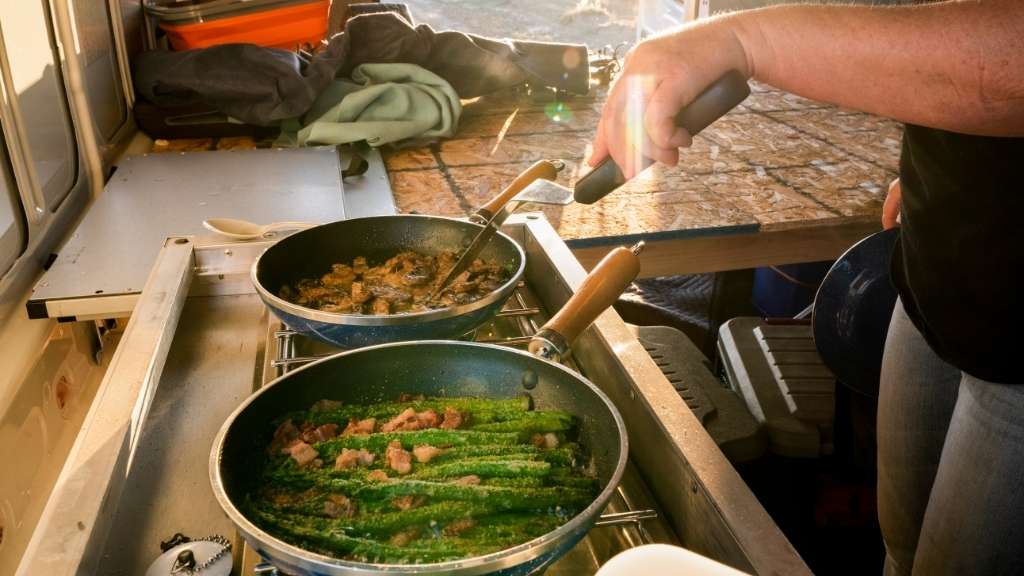
With two hungry children on board, we need to be able to whip up a meal at short notice. We keep it fairly simple but always tasty and filling.
This is a very important consideration in our family, we all love to eat. I will usually have planned a few meals in advance of the trip, each of which is easy and quick to make.
I will always bring dry ingredients such as flour, sugar, pasta, dry noodles, tins of soup, beans, stock cubes, etc.
We have a drawer below the rear seats. This is always filled with snacks, crisps, biscuits, sweets, cakes, and bread products. All the goodies can be found there!
The “snacks drawer” (as our kids refer to it) is handily located for access when on the road. Accessing one side of the kitchen cupboards proves tricky if the bench seat is rolled forwards to allow maximum space in the boot.
The VW California has a decent sized 42-litre fridge which is more than enough space to fit all the essentials we need for our first couple of days.
The VW California Ocean kitchen cupboards are really spacious and well thought out.
The design even comprises a built-in cutlery drawer. We have found there is space above the cutlery drawer to store a chopping board and tea towels.
In the cupboard below the cutlery drawer, we keep a plastic tub with all our kitchen utensils in. It’s handy to grab the lot as a whole if we are cooking outside in the annexe.
Our Campervan cooking utensils include:
- Collapsible cheese grater – we have a Joseph Joseph one that collapses flat. Sadly these aren’t made any more.
- 3 knives with blade guards – The knives we bought didn’t have guards, so we purchased a set of Nosh knife guards separately. It is very important to keep knives sheathed if kept loose in a drawer or box to avoid nasty accidents.
- 3 x wooden spoons
- Fish slice/turner
- Potato peeler
- Teabag squeezer
- Chopping board – we have a foldable Joseph Joseph Chop2Pot chopping board which fits nicely in the drawer.
We have a set of Russell Hobbs 5 piece clip and cook stackable pans to use in our campervan. As they are stackable they take up minimum space. We also have a whistling kettle , a Ridge Monkey Connect XL cooking set, and a small non-electric folding toaster .
We always keep cork mats handy to leave on the campervan kitchen top to provide protection against hot pans.
We’ve found the best camping plates and bowls are melamine plasticware. We have a set of 4 x dinner plates, 4 x side plates and 4 x bowls which suit us perfectly. Having two sizes of plates gives us a bit more time before we’re forced to wash up!
We also keep little coloured plastic bowls from IKEA, which are handy to pass around the campervan when on the road. These are perfect for biscuits or crackers and help to keep the campervan tidy. They are also a good size for a small portion of cereal in the morning.
I really detest drinking from plastic, so we keep four porcelain mugs in the campervan for tea and coffee, together with four small IKEA drinking glasses.
We have a set of three collapsible bowls for when we are sharing food. Outwell do a brilliant range of collapsible products . We have the set of three bowls, washing up bowl, and collapsible bucket. They are great space-savers and are very robust.
As well as the collapsible washing up bowl and bucket mentioned above, we take a dustpan and brush to quickly sweep the out the van. Also a small range of cleaning products including washing up liquid, sponges/cloths, washing up gloves, and liquid soap.
If we are away for more than a couple of nights then we will bring the extra kitchen equipment – a Cadac two ring burner and Kampa Colonel foldable kitchen stand .
You might ask why we bring an additional two ring stove and kitchen stand if we already have cooking facilities in the campervan?
With the children in and out of the van, I feel much safer cooking outside than inside. If it’s just a cup of tea then that’s OK but a full meal is a lengthier prospect. I also prefer all the bedding and clothes don’t smell of cooking.
We always add the outside kitchen to our campervan packing list for longer trips, subject to space requirements.
For this reason, we had considered buying a VW California Beach instead but after much deliberation, we decided the VW California Ocean was the best choice for our family overall.
When we travel, we are always a minimum of four people. The VW California Ocean comes with two external chairs and table as standard. All very clever. Not enough for four of you to sit around together though.
We purchased an Outwell Pemberton Table and Bench Set to bring with us on day trips and longer trips away. The extra table space always comes in useful and the benches can be used as coffee tables or a step if extra reach is needed as well as seating for four more people.
Yes, they take up valuable space but they are never surplus.
Clothing & bathroom
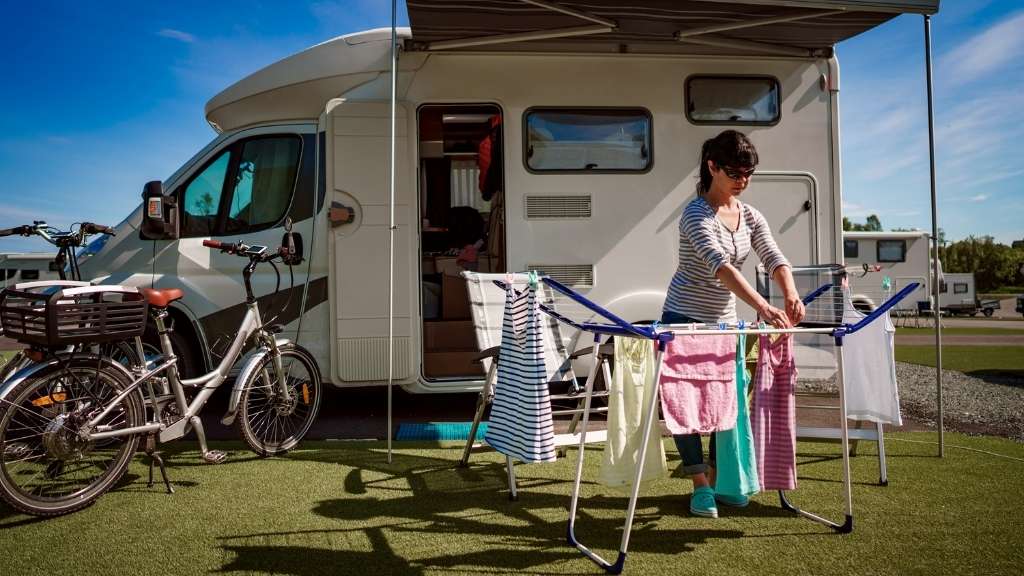
When packing personal gear the likely weather conditions have a big say. We try to cover every eventuality but not overdo it; it’s a balancing act.
This stuff always takes up more room than we’d like but that is because we are four people, everything is x4. It’s not like we can take only one pair of shoes each; usually, we need at least two, with one pair being something to wear in the shower or on the beach.
I can’t remember how many times we’ve had to set up in the rain, so having shoes that can get wet and will dry quickly, and full waterproofs are always a must.
To minimise the space used we will use soft bags, like the blue IKEA bags to hold coats and shoes and they are squishy to fit in any spaces but nice and open to grab what you need in a hurry.
For clothing, we use Amazon packing cubes . These are fabric and mesh square pouches which come in various sizes. One person’s clothing items are all contained in the pouch and again they are squishy to fit into tight spaces.
We will usually store the clothing cubes and bag of coats in the wardrobe cupboard of our VW California Ocean.
Quite often, campsites we stay at have washing machines on-site, so if we are staying for a week, we will most likely take enough for four days and do a wash. I take a couple of pre-measured laundry detergent doses in small resealable plastic bags.
We take one bath towel each and a couple of swimming towels too.
A little bulky, but they can be shoved in anywhere there is space or used to stop gear from rattling en route.
All of our toiletries are in soft wash bags, stored in the overhead locker cupboard above the rear seats in our California.
This is always a bone of contention for us. I like to bring our camping rotary line with us for a longer stay, but we often don’t have enough space for it.
As a family of four, we do need a facility to dry towels, coats, and maybe wetsuits after a day at the beach.
We compromise with a roll of washing line cord which we’ll attach to a tree and the awning rail or we’ll bring a small clothes horse. Pegs are a must of course.
We purchased some radiator airers to hang on the sliding door of the van. These weren’t very successful though and mostly got in the way. We use those in the house now instead.
We have two types of toilets. One for short trips and day trips and a second one for longer trips away.
Our short trip and day trip toilet is a popup Bivvy Loo . This lives permanently in the van as it comes in handy in an emergency when out and about or if we are away for just a couple of nights.
We will nearly always stay on a proper campsite as we have children with us and so will use the campsite facilities most of the time.
For longer trips away we have a Porta Potti 335 Portable Toilet which comes in useful in the middle of the night when we don’t want to stumble up to the amenities block in the dark.
Campsite setup
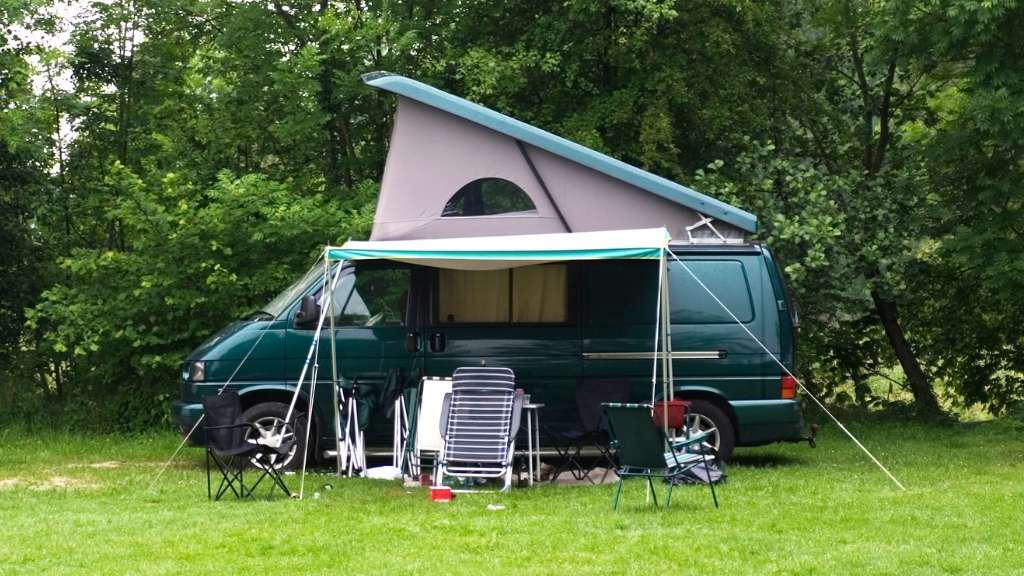
The camping gear we pack for trips away varies depending on how long we’ll be away and if we plan to stay at more than one site.
We opted for a Comfortz “Cali-Topper” pop-top cover and matching windscreen cover for our VW California Ocean.
Although the VW California Ocean has internal windscreen blinds, they do allow plenty of light in around the edges. The pop top lets plenty of light in too, so the cover helps to keep things dark during those summer mornings when the sun rises early.
In addition to keeping the pop-top dark, the roof cover also adds a layer of insulation for warmth.
An early-spring stay in a hired campervan a few years ago demonstrated to us the need to have insulation in the pop-top. We woke each morning to find all the bedding in the pop-top damp from condensation and freezing cold. Not very nice to wake up to and hard to get bedding dry during the day.
We have also been lashed with rain and high winds whilst sleeping in the roof bed and the cover has done its job to keep the rain and wind out.
As well as keeping warm and dry, the pop-top cover helps to keep the beating sun out on hot days. It’s a must-have if we are away overnight in the van.
If we are away for a long stay or might need to have the facility to sleep more than 4 people then we always bring our drive-away awning. If we are away for just a couple of nights and not touring in the van we might be able to make do with the Comfortz Awning kit.
We find as a family of four we need some extra covered space outside the van to house items which are in the way at night-time, like car seats or bags of shoes or coats.
Always essential and sometimes forgotten is a mallet for driving in tent pegs. We also carry a set of rock pegs in case of very hard ground, and a tent peg extractor to make it easy to pull them out again.
We’ll bring the full electric hook up kit if we are staying for more than two days on a campsite.
For up to three days, we find we can manage well enough with the leisure battery supplying our electricity. We use power for lighting, charging devices, the fridge and if very cold, running a camping heater in the drive-away awning.
Our electric hook up kit comprises:
- Caravan site extension lead 25m (230V).
- 3-way mains hook up lead Y splitter (a 2-way is actually enough).
- Mobile mains roller power unit – used for powering the awning only.
- Worldwide Travel Adapter with 2 USB ports (for use inside the campervan as the VW California has a 2 pin socket behind the passenger door).
Occasional electric hook up kit:
- UK Mains hook up adapter – we only bring this if we are near a domestic outlet we might want to use – i.e. a friend’s house.
- European mains hook up adapter – obviously only bring for European travel.
Read more: Electric Hook Up (How to Use a Campsite Power Supply)
Yes, you read that heading correctly. We’re comfy campers!
We take a small heater for our annexe (both the large or small versions) to take the edge off chilly mornings and cold evenings. It’s a Kampa Cuboid low wattage fan heater designed for camping, and runs off the campsite mains power supply.
For lighting, we have a Kampa SabreLink Flex lighting system. This LED light strip is also low wattage and can be plugged into the mains or the van’s 12V supply. It sticks to the annexe ceiling with velcro but can be mounted elsewhere with some string and a little imagination.
We do have ramps and chocks as part of our kit but rarely need to use them. It does make a real difference to sleeping in the pop-top in particular if you have the campervan nice and level. We have slept on a slope before without them and one of us ends up rolling on top of the person next to them.
Entertainment
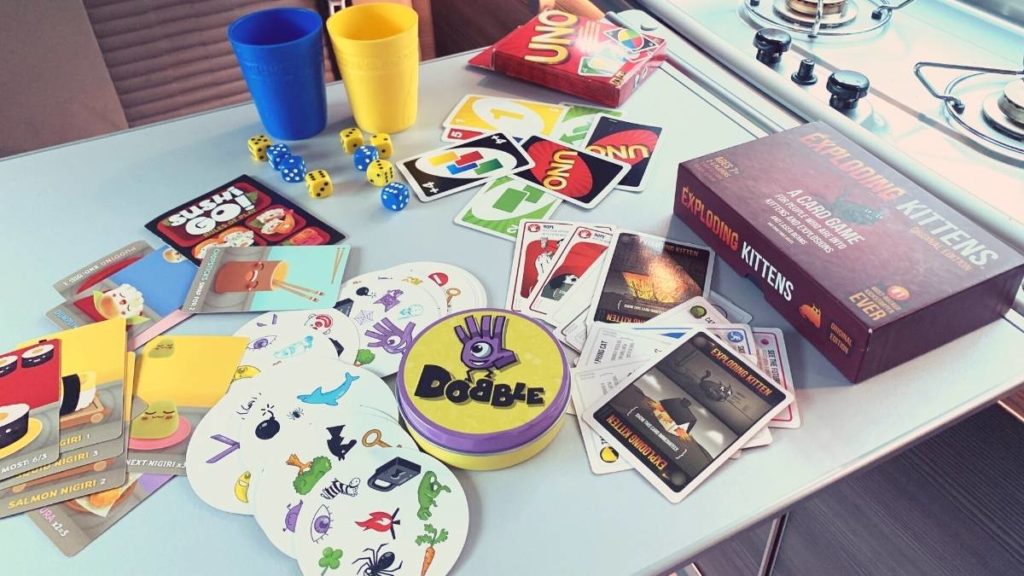
We always have a healthy supply of table games in our campervan. We keep a range to suit all ages and abilities.
Permanently resident in the boot are a couple of tennis balls and frisbees for a bit of throw and catch fun.
Depending on the destination, we might take a plastic cricket set, football, beach toys, and wetsuits for swimming in cooler water.
Noisy campsites with music blaring into the night are a pet hate.
We do enjoy listening to our own music sometimes, just not sharing it with our neighbours. So we always pack our JBL Flip 5 Bluetooth speaker (and keep the volume sensible).
We like to get away from the tech and encourage our kids to enjoy the outdoor environment with us. They do, but the British weather can mean we spend a few hours back at our little camp while the rain passes (or doesn’t).
Carrying a tablet or laptop means we can enjoy watching a film together. It also gives us more comfortable access than phone screens to more mundane things we may have to deal with.
Just-in-case items
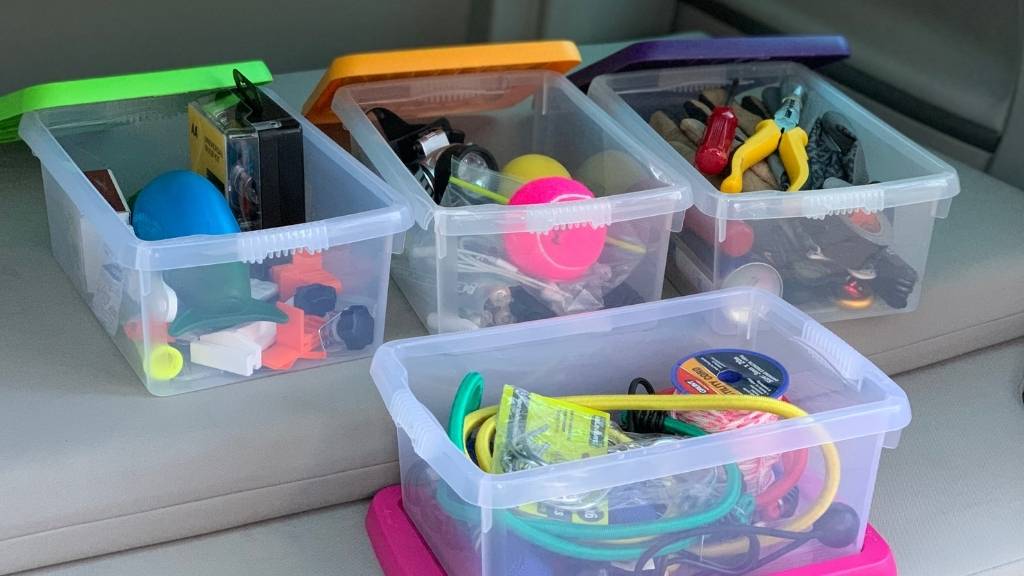
This category is really for things we would prefer not to use, but better to be prepared than not.
We are never too far away from a pharmacy or a doctors surgery should we need help but we keep a small box of essential first aid kit supplies with us at all times in the van.
Our campervan first aid kit comprises:
- Nurofen tablets and Nurofen for Children
- Antiseptic wipes
- Micropore tape
- Roll of bandage
- Hand sanitiser gel
- Insect repellent
- Insect bite/sting cream
- Earplugs (for noisy campsites)
- Piriton tablets for allergies, bites, and stings
You never know when you might have to get creative on the road, so we keep a box of kit which might just come in handy if things don’t go to plan or you need to fashion a solution on the fly.
- Bungee cords
- Clothes pegs
- Tools – pliers, screwdrivers, bike multi-tool
- Work gloves
- Spare fuses and lightbulbs
- Tie-down straps
- LED torches including a head torch
- Mobile phone charging cables
- Strong utility cord
- Ball bungees – very handy for attaching together almost anything.
- Large S hooks for hanging gear in the annexe.
- Milton tablets for cleaning the water tank
- Boot buddy – great for cleaning up muddy boots and wellies before putting them in the van.
- Gorilla glue
- Gorilla tape
Finally, we make sure to take the documents (or copies) that we may need.
- Passports, when travelling to Europe.
- Vehicle registration papers.
- Proof of insurance.
- Campsite booking print-outs.
- Ferry and train tickets.
- Membership cards – roadside assistance, camping clubs, etc.
We also take photos of all of these documents with our phones and make sure to record contact numbers for our insurance company and roadside assistance.
That covers most things we consider packing for trips away in our campervan, as well as the items which have a permanent home there.
I hope you find this list useful for when you are deciding what essentials to pack for your next campervan trip. Happy travels!

RV Checklists: 6 Printable Packing Lists
Rv maintenance & safety checklist, rv camping essentials checklist, rv kitchen checklist, rv grocery checklist, rv bed & bath checklist, make your own rv checklist.
- Download All RV Checklists
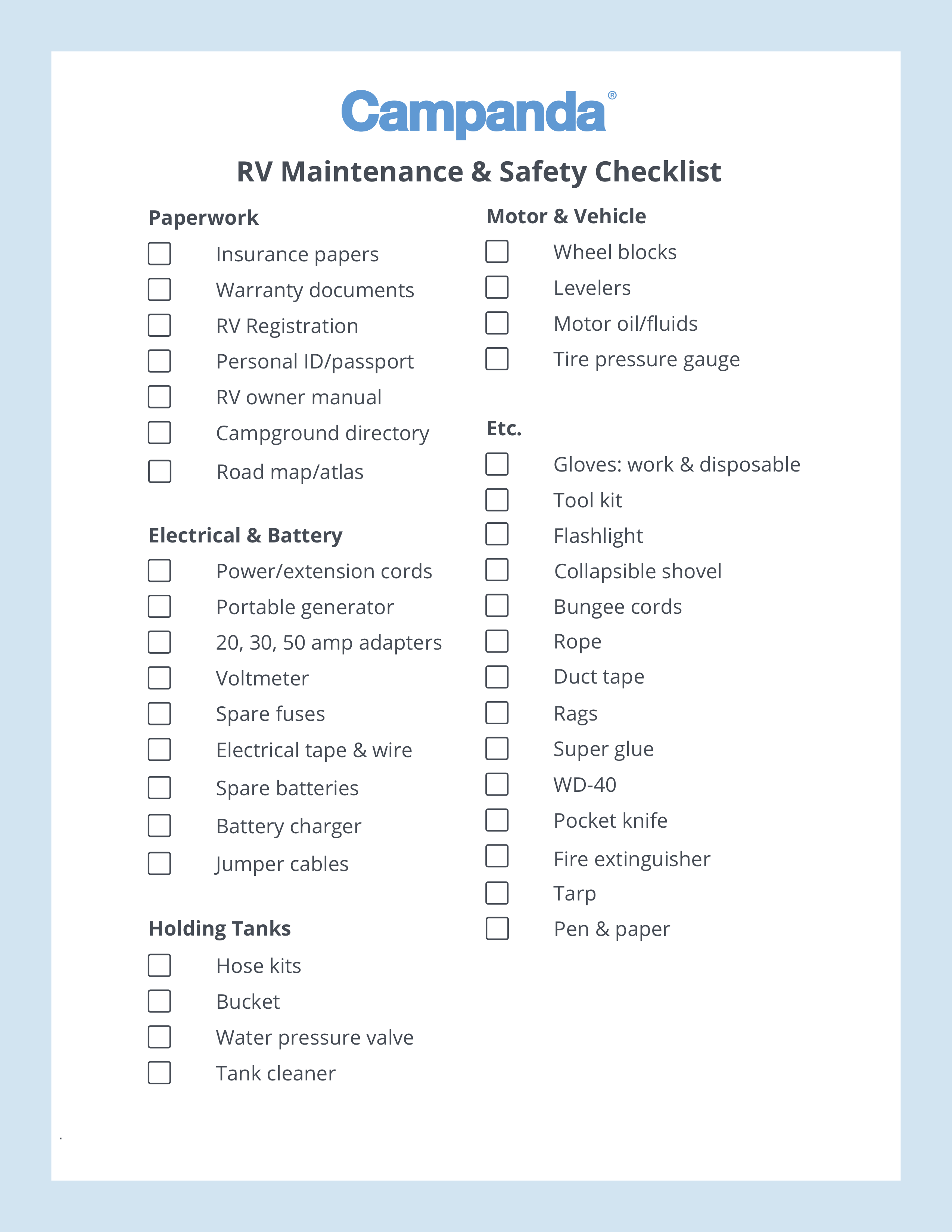
All RV Checklists
- Download RV Maintenance & Safety Checklist
- Download RV Camping Essentials Checklist
- Download RV Kitchen Checklist
- Download RV Grocery Checklist
- Download RV Bed & Bath Checklist
- Download Blank RV Checklist
Click Here To List Your RV
You May Also Like

Also, make sure you have your RV toilet paper and disposable cleaning wipes to clean your toilet quickly and painlessly.
Purchase a shower head that’s made specifically for RV showers. This will not only help with conservation, but it also provides a steady stream of good water pressure for your showers.
Hygiene and Health
First and foremost, you need a high-quality first aid kit that will assist you in the event of any injuries during travel. Your first-aid kit should include antibiotic ointment, burn ointment, insect/animal bite treatment, gauze, bandages, scissors, and as many other essentials as you can fit. If you don’t have the time to amass your own kit, buy a pre-made one created specifically for camping. These kits are usually certified and include manuals to help you with basic care.
Your first aid kit should be stored somewhere accessible where the entire family knows where to find it. It should always be put back in its designated place after use so no time is wasted trying to find it in an emergency.
Just as important is bringing along all necessary medicines. Include things like a pain reliever/fever reducer, a thermometer, anti-nausea/anti-diarrhea/heartburn medication, any prescription medications, allergy medications, cough syrup, eye drops, and vitamins.
Make sure to bring along ample sun protection and aloe vera gel to soothe any burns. Don’t forget insect repellent, and consider packing a mosquito net for nighttime, especially if you’re traveling with children.
When it comes to maintaining your hygiene on the road, you’ll want to have most everything with you since campgrounds are light on amenities in this category. Try to find multipurpose toiletries to save on space and minimize additional weight. Consider having two of each item in your toiletry bag—one at home and one in the camper. That way, you don’t have to go through the hassle of moving everything back and forth.
Buy a few soft cases of various sizes for your hygiene products, like waterproof bags that close tightly so they can be stored in smaller spaces. If you pack all of your items in one big, sturdy bag, you’ll have a harder time stashing it in the precious space available. Your shower gear can be stored in your shower caddy or bucket and hung on your shower head, as long as it’s sturdy enough.
Clothing and Linens
What you bring in terms of wearables determines the ultimate comfort of your trip. A simple way to start packing your wearables is to list and imagine the different situations that could arise.
Wet Weather
Rain is a reality for any camper, and when you’re out in the middle of nowhere, appropriate rain gear can feel like a lifesaver. Make sure you bring rain boots, umbrellas, raincoats with hoods, and ponchos for those seasonal—and unexpected—storms.
Mud is a problem because it makes messes in your rig. Make sure to bring rags that you can use to wipe off boots, door mats to wipe your feet, extra socks, and clothes you don’t mind getting dirty.
Cold Weather
No matter where and when you’re traveling, you will want to prepare for the chance of chilly nights where you’re staying. Don’t forget a warm jacket, hats, gloves, thick socks, long underwear, and sweaters for those unexpected cold fronts. Extra blankets are also handy when sitting outside at the campfire.
Warm Weather
Hot weather can be just as much of an issue as cold. A sun hat, sunglasses, sun umbrella, and lightweight blankets for hot nights will help keep you comfortable and protected. Warmer weather also means packing your bathing suits and swim shoes. You can keep your RV cool with sun blockers and portable fans throughout.
Bedding and Pillows
Some people choose to just rely on sleeping bags even when they sleep inside; others prefer to bring classic bedding with sheets, comforters, and pillowcases. Whatever you do, make sure you bring enough pillows for everyone to feel comfortable no matter where they sleep. Think ahead to how you are going to wash and dry any large bedding that gets dirty during the trip.
As much as you want to pack lightly for your trip, you really can’t have too many towels. Make sure you bring hand towels as well as shower towels, pool towels, and clean-up towels or rags. Since you might not have a dryer available, having enough towels to get you through a rainy day or a family trip to the showers is essential for everyone’s comfort.
Camping Gear
Let’s talk about your tent. If you’re a newbie, you may be thinking, “I don’t need a tent, that’s the entire reason I bought an RV in the first place!” But many RVers find themselves pitching a tent now and then during their trips. It’s never a bad idea to bring one along if you have room.
Of course, if you plan on camping outside for one night or more, there will be some additional supplies that you will need to make your night peaceful and safe.
- Camping pads : A must-have to keep you at the base level of comfort in your tent and to keep you dry in case your tent leaks or the ground is wet. Based on your desires, needs, and budget, you can get anything from a full-blown air mattress to a minimalist ultra-light air pad. What you choose will depend on the weather, your personal preference, your budget, and the size of your tent.
- Sleeping bags : Make sure you’ve got one for each person and that you have them rolled and stored as tightly as possible.
- Accessories: For added comfort, bring along an extra tarp for the ground, flashlights, and extra blankets.
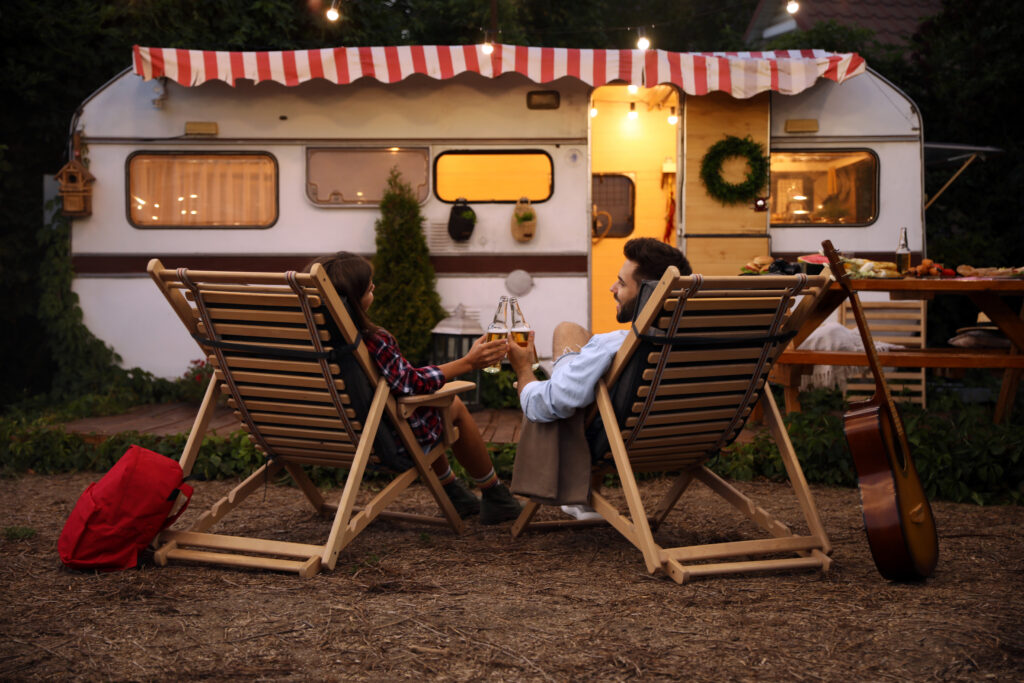
Depending on your RV WiFi situation, you may or may not decide that it’s worth it to bring along a ton of electronics. Still, if you have work to do or kids to entertain, bringing a laptop and charger is probably a good idea. Don’t forget to download any movies or TV shows you want to watch before you leave to save battery life.
Some other products for entertainment that RVers favor are a portable stereo , headphones, e-readers, tablets, and an outdoor movie projector .
Indoor Entertainment Ideas for RVing
There are many ways to entertain yourself indoors on a rainy day while RVing. Consider bringing along books, board games, a deck of cards, a yoga mat, an arts and crafts box, and coloring books.
Outdoor Entertainment Ideas for RVing
Outdoor entertainment is endless. Some RV camping favorites to bring include binoculars, hammock, volleyball net, sports balls, badminton, squirt guns, bird watching kit, pool floats or boogie boards, goggles, and comfy camp chairs.
Kitchen Essentials
For easy kitchen packing, put some thought into meal planning to help make sure you bring the essentials—and skip the unnecessary.
Refrigerator
An RV refrigerator and a normal refrigerator are not the same. Your RV refrigerator needs proper ventilation to work properly, so it should never be overstuffed with items. You also should organize your items based on weight. Heavy stuff should go at the bottom of the fridge, and lighter stuff should go on top. Use a level to check that the fridge is balanced.
You need to take extra care to make sure that your refrigerator door stays closed while on the road with RV refrigerator tension bars that are created specifically for this purpose. Bungee cords also come in handy. Avoid storing easily spillable liquids in your fridge and store everything in airtight containers.
Remember that an RV refrigerator is subject to the outside temperature, so you need to keep an eye on the refrigerator’s temperature and adjust it based on how hot or cold it is outside. It might be a good idea to have some extra ice on hand in a cooler if you’re going to be traveling during hot summer days. In extreme heat, you cannot always rely on your RV to stay cold enough to protect your meat and frozen foods.
Your RV food list won’t differ too much from your typical grocery list, except it will depend a little more heavily on non-perishable and canned items.
Outdoor Cooking
For outdoor cooking, you can’t go wrong with a Dutch oven for any over-the-fire meals you want to make. You’ll also want a cast-iron skillet , a camp stove , or an electric skillet or griddle. Skewers are useful when grilling, and they can double as s’more sticks.
Clean-up and Storage
The easiest way to eat while camping is to use paper plates, napkins, and plasticware. However, reusable tableware is the more environmentally responsible choice. Make sure you bring dish soap, sponges, and a drying rack for all clean-up, as well as paper towels.
For storing food, you’ll want all the basics—aluminum foil, plastic wrap, baggies, and reusable containers.
Cookware and Utensils
Cookware is heavy, cumbersome, and sometimes breakable, so many RVers only pack the bare minimum. For most campers, this just means a few pots and pans, a coffee maker, a baking dish, a baking sheet, and anything extra you need for the kids. The utensils you’ll need depend on your food list and how often you plan to eat outside. Some staples include a spatula, tongs, serving spoons, serving trays, a salad bowl, and a wooden spoon. And don’t forget a can opener and probe thermometer.
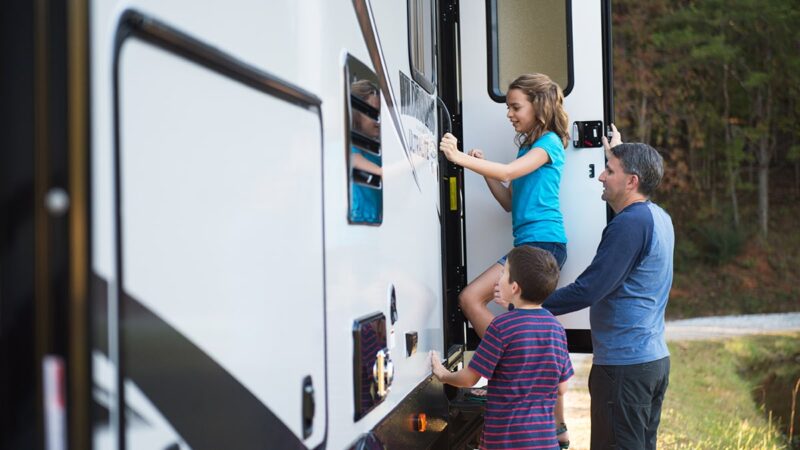
Packing for Kids and Pets
There’s nothing better than bringing your kids or furry friends along for an RV adventure and watching them experience camping and exploring. However, there are some added concerns that you need to be aware of when it comes to packing for and traveling with kids and pets.
Having kids and pets with you means more people (and animals) to manage and organize in the RV. Keep things organized and easily accessible for the family by storing items in clear, transparent containers so everyone can easily find their clothes, toys, and gear.
Invest in packing extra clothes since kids tend to soil their clothing (and yours) more quickly. And, of course, if you have babies or young children with you on the road, add diapers, wipes, bottles and a bottle washer, and baby sleep gear.
You can find some pretty cool kids’ packs that are specifically geared toward bringing kids along on camping trips, and you can find kid-sized camping pads and other camping gear.
For pets, make sure you travel with their vaccine records and necessary pet gear like a crate, leash, harness, bowls, food, travel bed , grooming supplies, water bottle , necessary medication, waste bags, wipes , a pet first aid kit , a tick remover , and a life jacket . Other pet-recommended gear for camping includes a hose attachment for easy bath time, a tie-out cable , and a temperature monitoring device for when your pet can’t tag along.
RV Essentials
- Water tank filled (at least halfway)
- Levels and leveling kit
- Gas tank filled
- Tools necessary for on-the-road fixes
- Emergency light kit
- Jumper cables and a jump pack
- Water pressure regulator
- RV fridge cooling fan
- Bungee cords
- Black tank treatment, disposable gloves, and sewer hose/attachments
For the Campsite
- Camping chairs
- Deck of cards
- Board games
- Fishing gear (and fishing license)
- Drawing tools
- Hiking maps
- Mountain bikes
- Kayaks, canoes, or paddleboards
- Headphones or a speaker
- Portable movie projector
- Axe for splitting wood
- Tent with camping pads and sleeping bags
- Pool floats and goggles
Personal Items and Toiletries
- Phone charger
- IDs and driver’s license
- First aid kit
- Sun protection and aloe vera
- Bear spray (if you’re in bear country)
- Headlamp or flashlight
- Extra batteries
- Reservation paperwork
- RV manual and RV maintenance history
- Prescription medications
- Contacts and lens solution
- Toothbrush and toothpaste
- Shampoo and conditioner
- Nail clippers
- Travel-sized steamer
- RV toilet paper
- Rain jacket and pants
- Baseball cap
- Hiking shoes
- Water shoes
- Casual shoes
- Sweaters or hoodies
- Heavy jacket
- Light jacket
- Short and long-sleeve shirts
- Shorts and pants
- Pillows and pillowcases
Kitchen and Cooking
- Food and drink (be aware of high prices near campgrounds)
- Oil or butter
- Frying pan or skillet
- Measuring cups/spoons
- Grill or griddle
- Plates and bowls
- Cups and mugs
- Forks, knives, spoons
- Serving spoons
- Probe thermometer
- Bottle/wine opener
- Cutting board and knife
- Paper towels
- Disposable cleaning wipes
- Ziploc bags
- Coffee maker
- Cooler (if you don’t have a fridge)
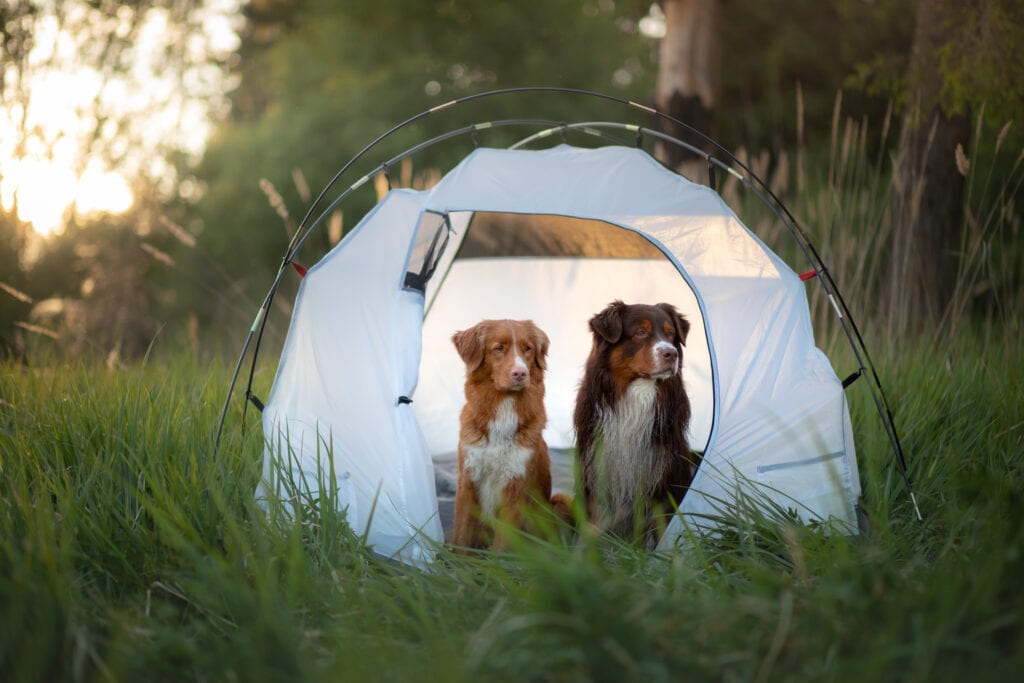
- Vaccine records and medication
- Crate and/or dog car seat
- Leash, harness, and tie-out cable
- Bowls and food
- Grooming supplies and wipes
- Pet first aid kit and tick remover
- Life jacket
- Temperature monitoring device
Packing for an RV outing can be overwhelming at first, but with this guide and handy checklists, you’re already well on your way to becoming an RV packing pro.
This article has links to products that were carefully selected by our editors. We may earn commission on your purchases from these links. Visit this page for the full details of our affiliate marketing policy.
Meet the Author

Roadtrippers
Roadtrippers helps you find the most epic destinations and detours—from roadside attractions to natural wonders and beyond.
Get the most inspiring stories from the road sent directly to your inbox.

- Sign up Log in Sign out
- Log in Sign out
Plan your journey, find amazing places, and take fascinating detours with our app.
If you used to sign in with Roadpass, you should now use the same username and password to log in directly with Roadtrippers above.
We couldn't find an existing Roadtrippers account using that service. Please try signing in with another option.
We need your email address to send you trip itineraries and other updates.
How do you want to plan your trip?
With just a few questions, our newest Premium feature, Autopilot, will plan your next adventure.


IMAGES
VIDEO
COMMENTS
Packing up a motorhome or campervan? Not sure what you need or where to put it all so things are safe? Don’t worry, we’re got you covered- here’s everything you need to know, as well as a FREE motorhome packing list for you to use.
Unsure what to pack on your RV vacation? Our complete packing list for RV trips features essential camping and RV gear for your next journey.
Are you about to embark on your first great adventure in your new campervan and wondering what you need to pack for your trip? Read on and see what we recommend in our campervan essentials packing list.
Make sure you're not leaving anything behind with our free, printable RV packing lists. Whether you're a first-timer or veteran RVer, these 6 RV checklists will make packing for your next trip a whole lot easier!
If you’re having trouble narrowing down your RV packing list or are just trying to build the most cost-effective checklist you can before your trip, you’ve come to the right place. Keep reading for suggestions on affordable items to add to your RV packing list!
Ready for your next camping trip? This RV packing checklist outlines everything you need to know to pack your RV like a pro and hit the road stress-free.